Barbican Guide:
June 2020
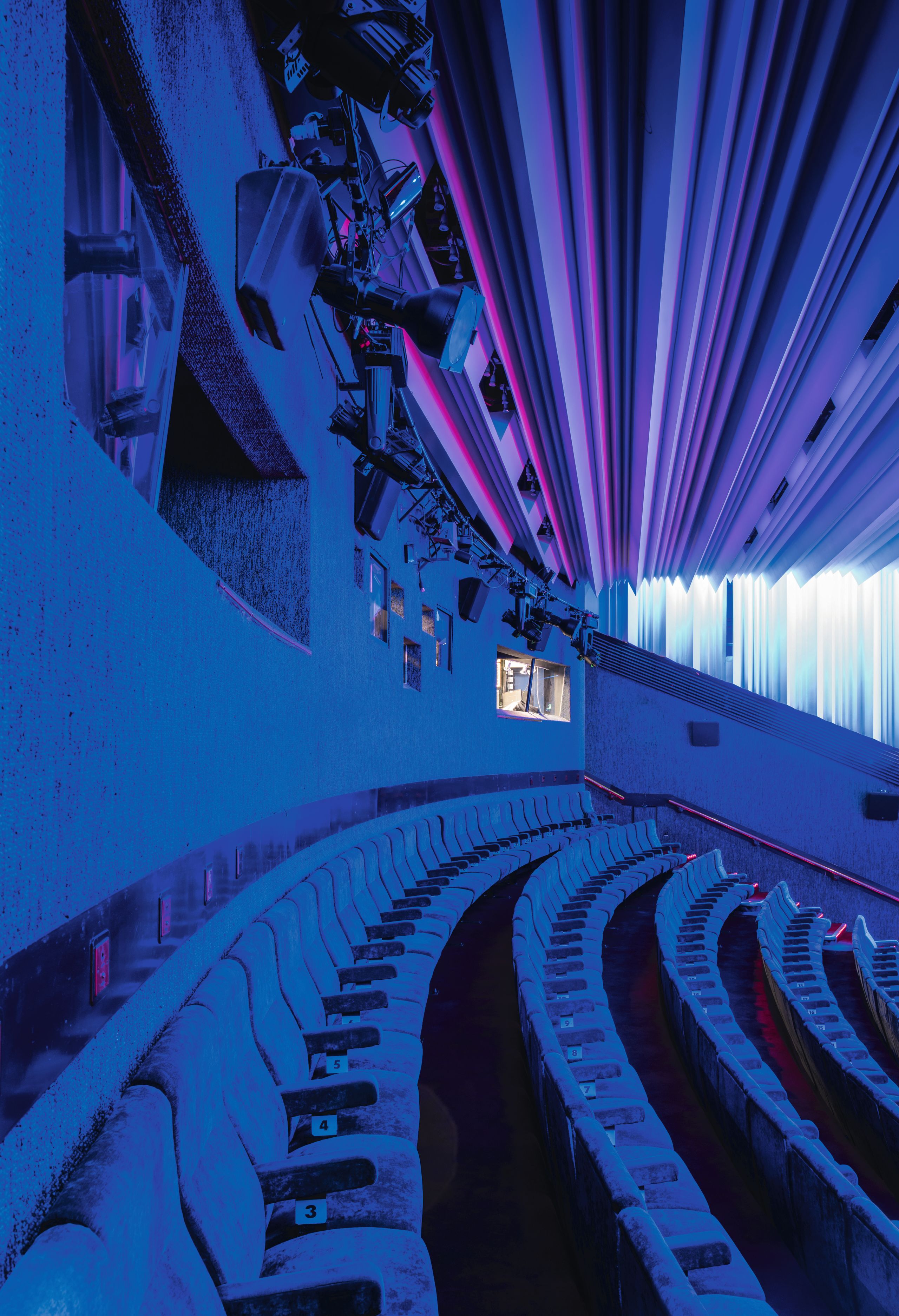
A message from our Managing Director
Welcome to our June Guide. Everything here is inspired by our artistic programme and it’s a privilege to continue to connect you with exceptional artists and creative thinkers during this time. Throughout this closure period we remain focused on making our work as accessible as possible; you will always find something new to Read, Watch & Listen to on our website, and we are working with local communities to help ensure that those without online access can still benefit from culture and creativity.
These are difficult times for everyone, but if you can, we’d love you to show your support by making a donation so we can help more people to discover and love the arts. Thank you.
Nick Kenyon
A solid listen
Our new podcast, Nothing Concrete, is your behind-the-scenes look at the Barbican. From exclusive interviews with artists to unmissable archive material, it offers a novel perspective of what’s happening within the programme and more widely.
In our latest series, The Art of Change, we speak to Stephen Fry, as he reads Ludwig van Beethoven’s Heiligenstadt Testament to spark a discussion of the great composer’s inner struggles, musing on the link between genius and mental illness, popular modern images of the Romantic artist, and Beethoven at the forefront of a revolution of the heart.
In Sound Unbound, comedian Josie Long talks to creative minds about the music that moves them, including Steve Reich discussing the profound impact hearing Igor Stravinsky’s The Rite of Spring had on him and his future career as one of the leading voices in minimalism.
Listen and subscribe on Acast, Spotify, or wherever you get your podcasts.
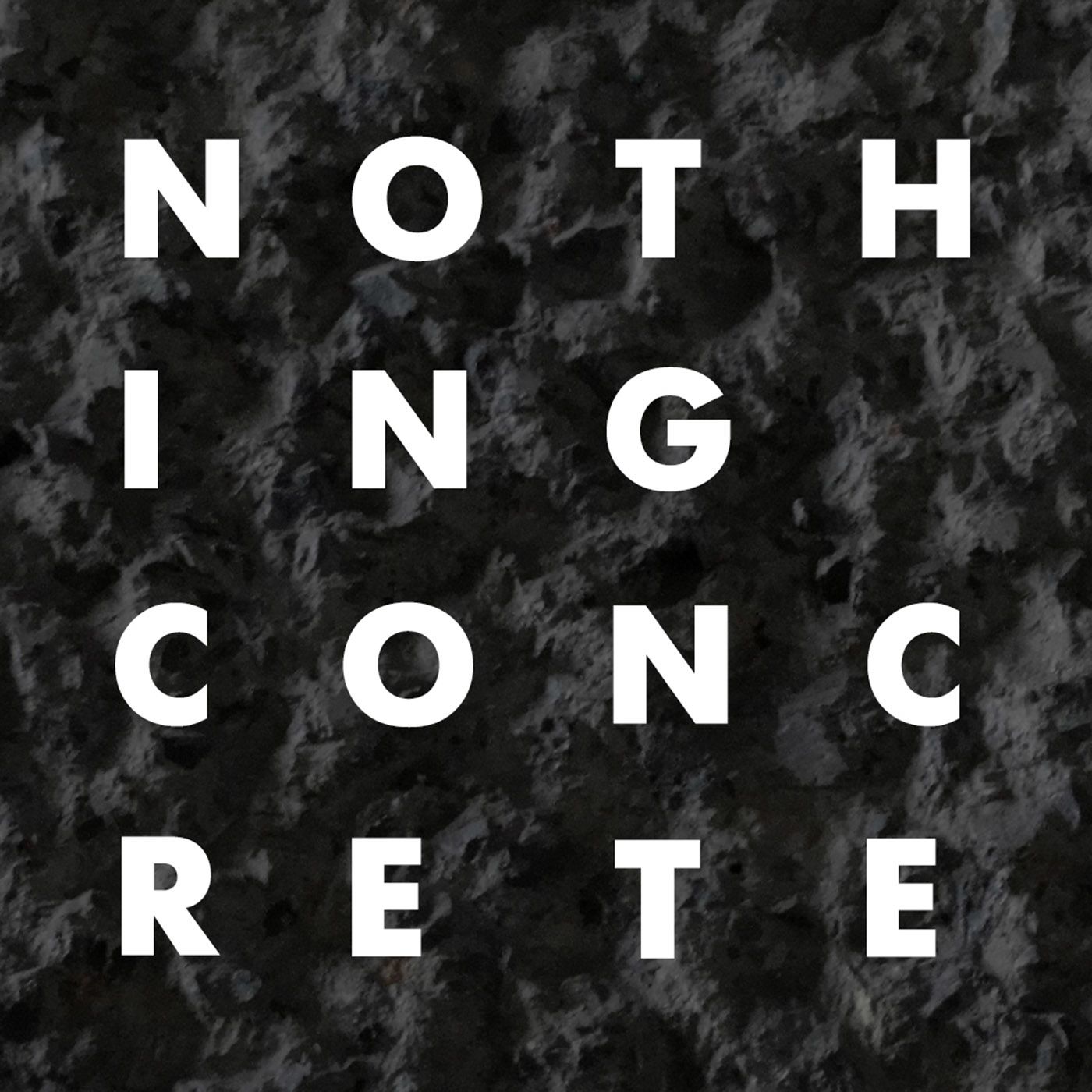
The crying game
At these times when sadness seems closer to our daily lives than usual, having a cry at a good film can be quite cathartic. Our New Release Curator Sonia Zadurian, who is prone to welling up in films, shares some of her tips.
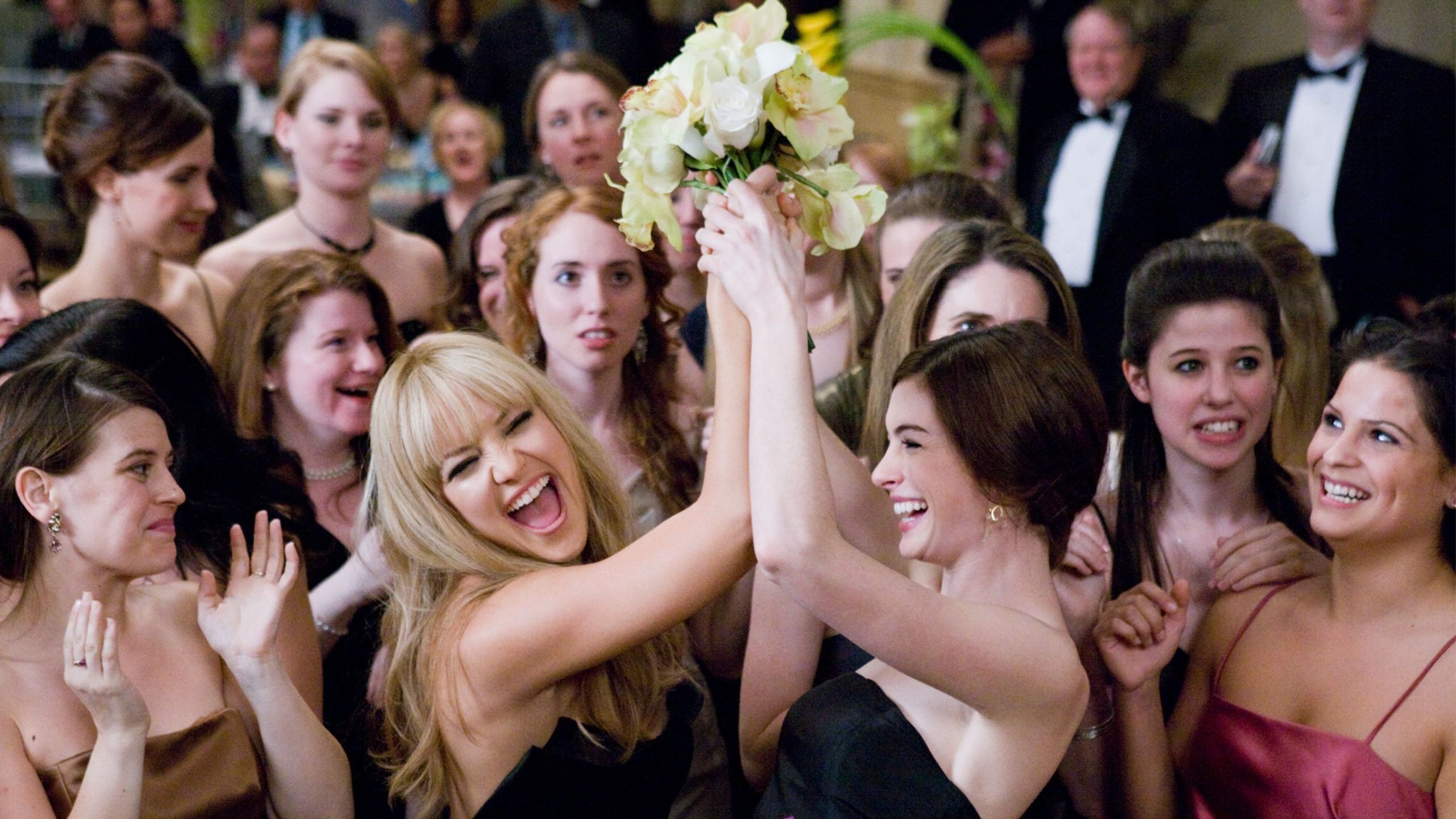
I know all there is to know about the crying game.
No, not the classic British crime thriller from 1992. That other game. You know, the one where a film employs dastardly and manipulative methods to turn on your waterworks, like Tom Hanks and Meg Ryan living happily ever after.
I know all about crying at films because back in 2009 when watching the utterly dreadful Bride Wars for my university radio station, I discovered that I am Crier in Chief; liable to fold like a piece of paper and envelop my face in tears at the slightest whiff of something sad. Did you know that there’s a moment when Anne Hathaway and Kate Hudson really aren’t friends!? Devastating.
As the Barbican’s New Release Curator, I am sent out several times each week to scope the upcoming titles and assess their suitability for inclusion in the Barbican cinema programme. I also usually have a bit of a cry. Or a lot of a cry. The biggest cry on recent record was Greta Gerwig’s Little Women, which tracked a full 85% on the ‘how much of this film have I been crying for?’ scale.
So, after 10+ years of not really understanding my astounding ability to produce water from my eyeballs at the drop of a hat, or the mere suggestion of a hat, I am taking this opportunity to dig a little deeper by keeping a diary of my lockdown crying games. Will there be a common theme or genre perhaps? Let’s find out...
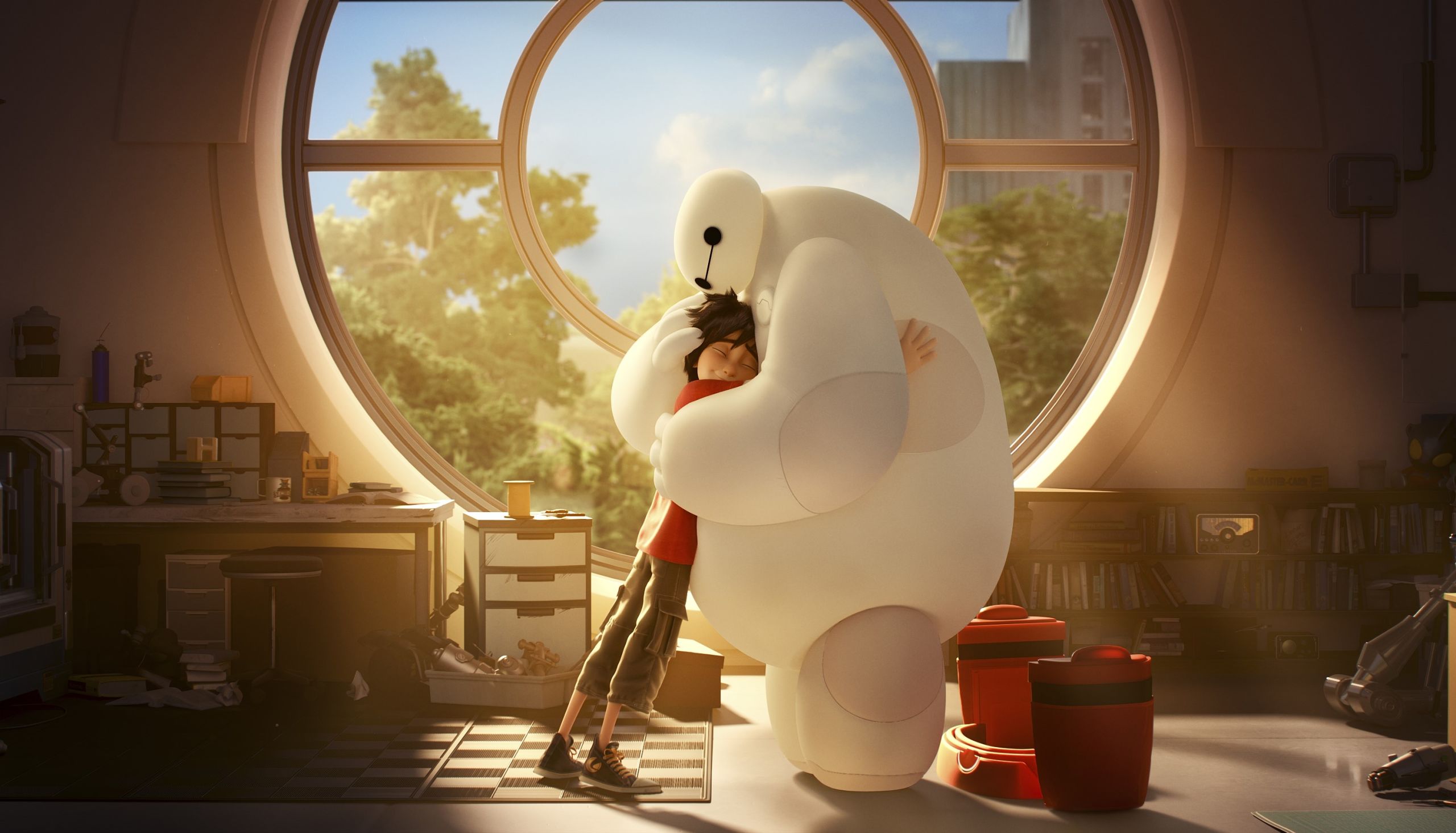
Still from 'Big Hero 6' (2014)
Big Hero 6
(2014 US Dir Don Hall & Chris Williams)
Somehow, this tale of young tech wiz Hiro and his robot sidekick Baymax passed me by on general release in 2014, but the launch of Disney+ gave me the perfect opportunity to finally explore San Fransokyo. It’s a hugely predictable but touching tale of grief and how we recover from it, wrapped in an extremely entertaining superhero-light package. My love for tubby inflatable robot Baymax knows no bounds.
Cry count: A total of five cries. Mostly surrounding Baymax. Perhaps cries linked to affection for tubby inflatable robots? Will investigate further.
Tully
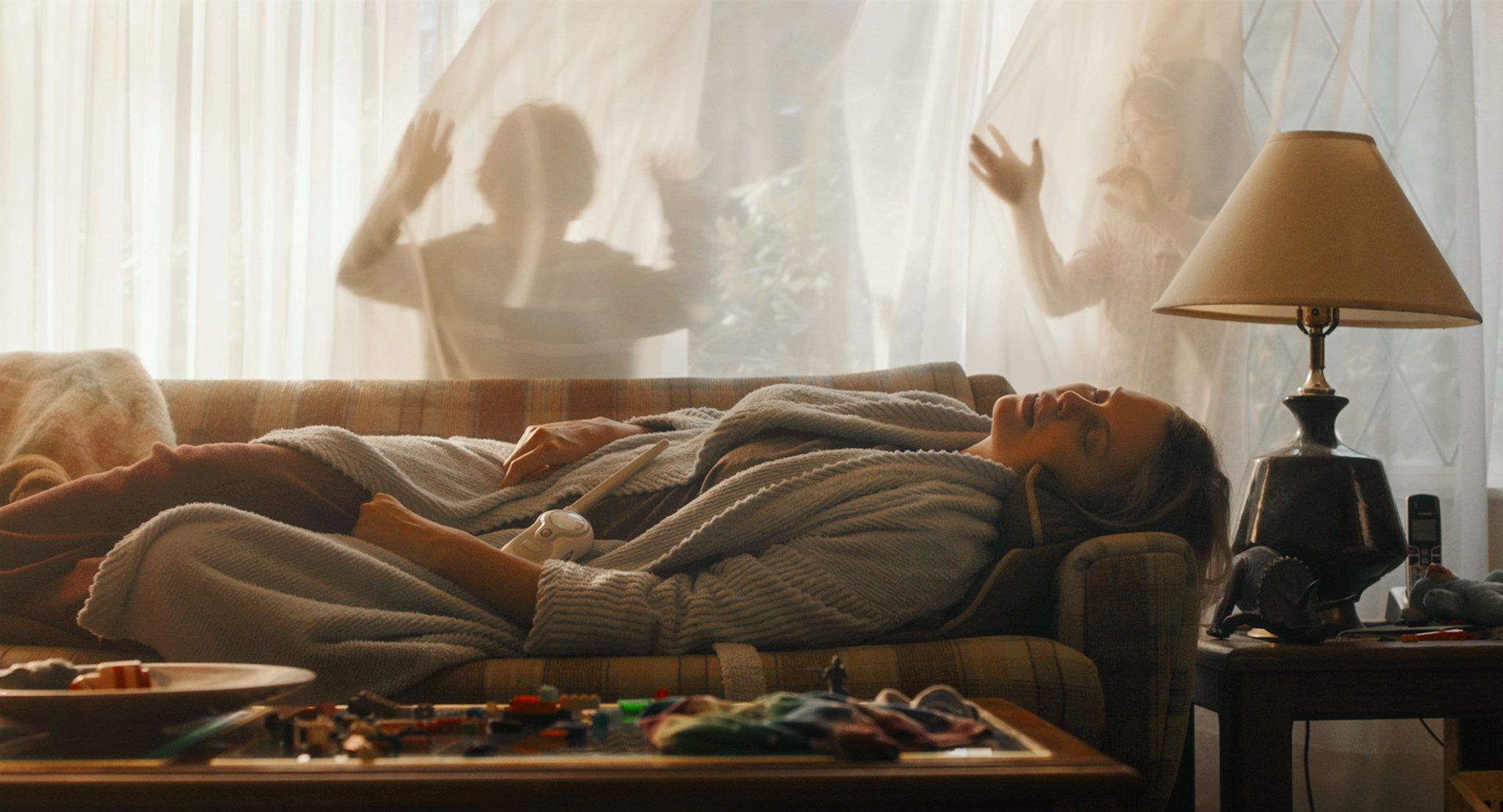
Still from 'Tully' (2018)
(2018 US/Canada Dir Jason Reitman)
This time we turn to Netflix for another title I somehow missed on release. This drama follows new mum of three (Charlize Theron) struggling with a lack of sleep and an abundance of small dependants. A very well-observed script and compelling performance from Theron. I may have cried happy tears when Theron was doing well and producing cupcakes. It wouldn’t be the first time tears have been produced by the appearance of cupcakes.
Cry count: One or two, both relating to Theron’s plight. Low cry count likely due to mixture of tears with simmering anger at unrealistic expectations placed on women. Anger as effective bottle stopper of tears? Will investigate further.
Hunt for the Wilderpeople
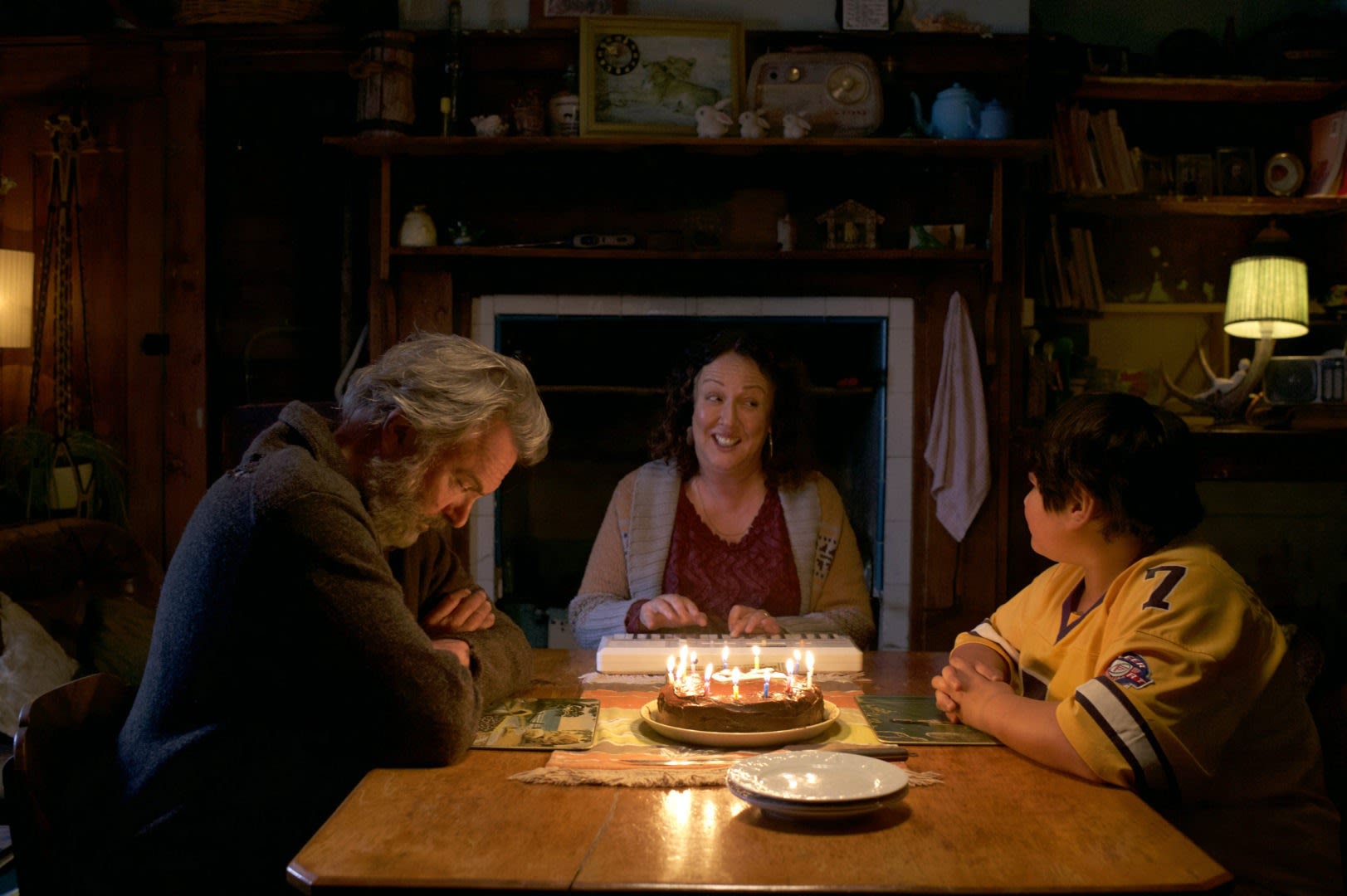
Still from 'The Hunt for the Wilderpeople'
(2016 New Zealand Dir Taika Waititi)
Full disclosure, this was a most beloved re-watch for me and my tears; when I saw it was streaming on Amazon I just couldn’t resist. The story of a rebellious kid (Julian Dennison) fostered near the wild New Zealand bush by Bella (Rima Te Wiata) and Hec (Sam Neill) gets me at the same points every time. Writer/director Waititi’s ability to make me laugh and cry is long-standing (see 2010’s Boy, also available on Amazon). A brilliant cast, heart-warming story and the appearance of a cake all responsible for pushing me over the emotional edge.
Cry count: Three quite well-spaced cries. Pattern of cakes contributing to cry count continues.
Well, it appears I have some further investigating to do. Areas of study? Giant inflatable robots, cakes and the patriarchy.

Still from 'Big Hero 6' (2014)
Still from 'Big Hero 6' (2014)

Still from 'Tully' (2018)
Still from 'Tully' (2018)

Still from 'The Hunt for the Wilderpeople'
Still from 'The Hunt for the Wilderpeople'
Scoring a silent masterpiece
Digging deep into musical history was a vital part of composer Julia Holter’s approach when writing a new score for landmark film The Passion of Joan of Arc.
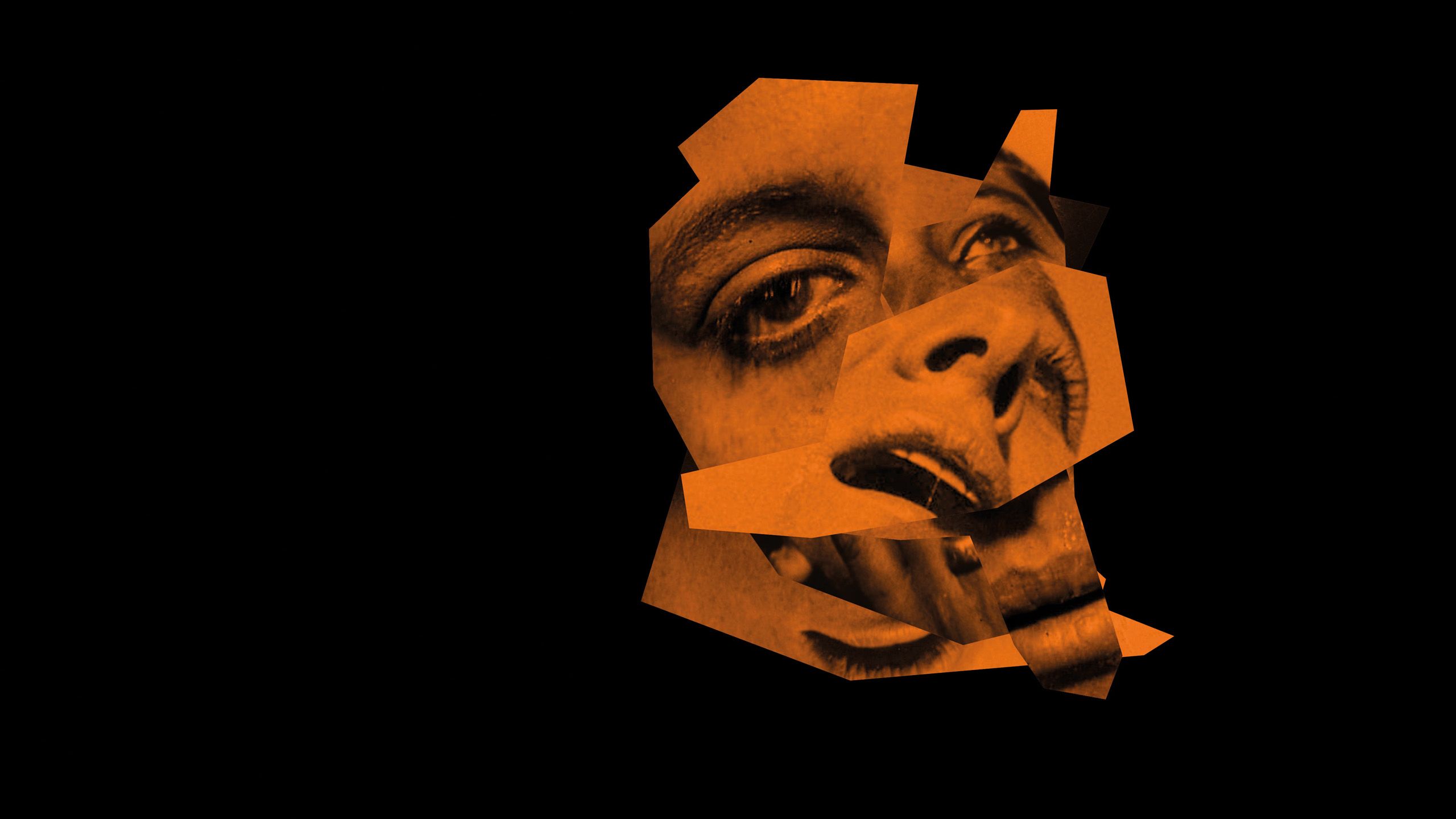
One of cinema’s iconic moments is the scene in Carl Theodor Dreyer’s extraordinary film where Joan of Arc (played by Renée Maria Falconetti) is burned at the stake, her face a picture of silent suffering.
Falconetti’s performance is a masterclass in acting. To reach such heights, Dreyer – who had a reputation as a very demanding director – reportedly forced the French actor to kneel for hours on cold concrete floors, and then wipe any expression from her face to create a study in suppressed anguish.
The director’s throwing-out of the cinema rule book – using close-ups rather than wide scene-setting shots, playing with actors’ gazes and much more – force the viewer to focus on Joan’s inner state. It’s uncomfortably personal and intense.
Almost a century after the film was released, Opera North commissioned American singer and multi-instrumentalist Julia Holter to write a new score for the film. We were due to host its London premiere before the Barbican was closed following government advice on the coronavirus pandemic. We’re hoping to reschedule it for next year.
‘The film is amazing,’ Holter said, speaking from her home in LA before the pandemic. ‘When I first saw it, I found it very visceral and uncomfortable. Falconetti’s performance as Joan of Arc is so intense, and the way it’s shot is dizzying – almost claustrophobic.’
Holter said she based the new score on two medieval chants, one of which – Te Deum laudamus – is thought to have been sung when Joan of Arc broke the British siege of the French city of Orleans in 1429.
‘I built music around the chants and adapted them,’ explained Holter, whose score combines synthesizer, viola and percussion, plus the sounds of an epic choir which swirls and masses around her own vocal line.
Listen
Get a taste of Holter’s score in this clip, in which you can see Falconetti’s extraordinary performance.
excerpt of my live score for "Joan of Arc" at Unsilent Cinema w @dynamacabre @knitdrums Devin Hoff Tashi Wada. thanks @carolineplz for video pic.twitter.com/Pr4nsCUoba
— julia holter (@JULIA_HOLTER) October 2, 2017
The Long Read
Pictures of Difference
Photographer and activist Sunil Gupta tells us how he captured the diametrically opposed experiences of gay culture, in New York and Delhi.
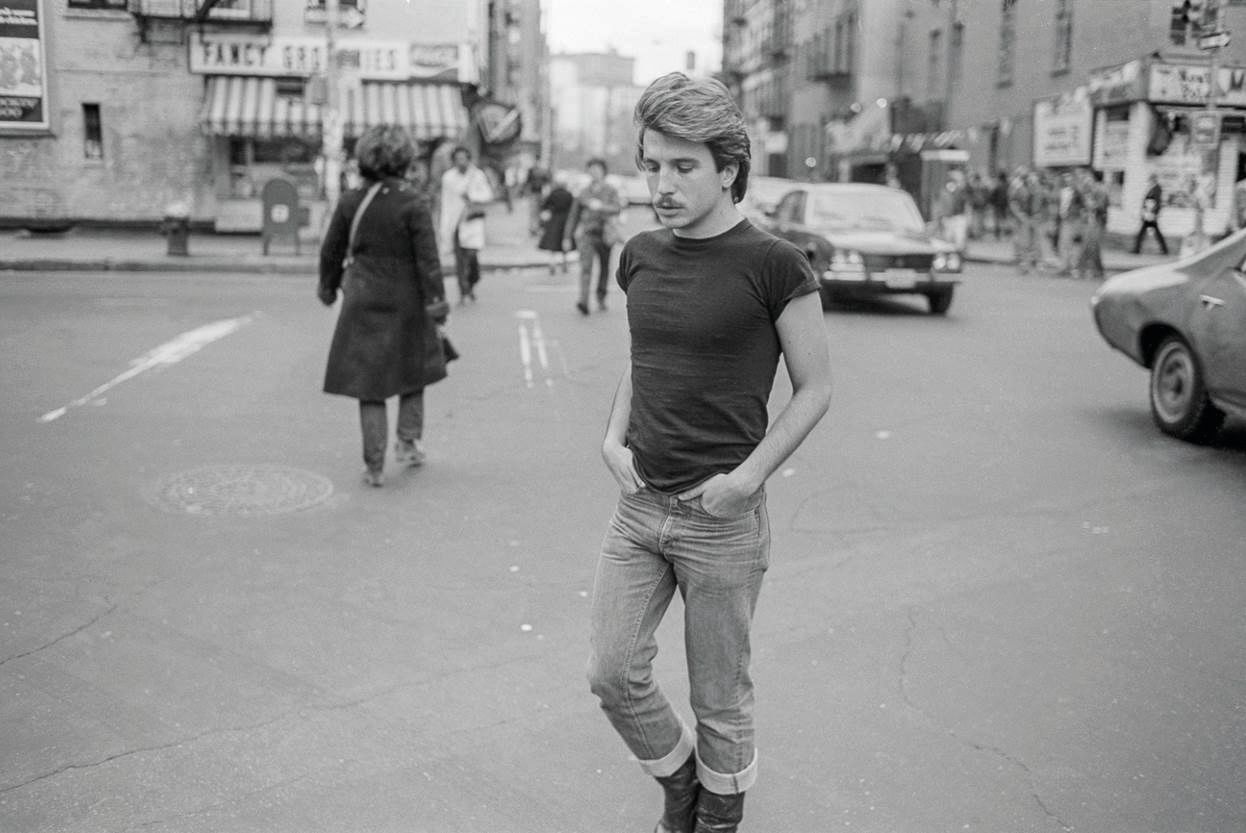
In 1976, Gupta had just moved from Montreal to New York, on an ill-fated mission to study for an MBA (more of that later). There, just a few years after the Stonewall riots and before the fears of the Aids epidemic, he photographed the buzzing streetlife of Manhattan cruising hotspot, Christopher Street.
The joyous atmosphere he captured is in stark contrast to his project a decade later in India, where being gay was illegal.
‘It had always seemed to me that art history seemed to stop at Greece and never properly dealt with gay issues from another place. Therefore, it became imperative to create some images of gay Indian men; they didn't seem to exist,’ he says.
These two juxtaposed sets of work are part of our major exhibition, Masculinities: Liberation through Photography, which looks at how photographers and filmmakers since the 1960s have portrayed what it means to be a man.
With the Centre closed because of government advice about coronavirus, we wanted to share a part of the exhibition with you. We gave Gupta a call at his home studio in south London, to discuss his memories of making the two series.
Born in Delhi in 1953, Gupta moved with his family to Montreal in 1969 before answering the call of the Big Apple a few years later.
‘It was a very exciting time,’ he says. ‘I was only 23 and I’d managed to escape my parents’ city. New York wasn’t too far from Montreal but it was very different as a place to live. There was a lot going on there in both my major spheres of informal interest: to be gay and to be a photographer.’
Masculinities: Liberation through Photography is sponsored by CALVIN KLEIN
A 'life-changing' poetry group
The latest anthology of work from our Young Poets programme has just been published. But what’s the group all about?

Barbican Young Poets is a programme for young people aged 16–25 who have an interest in developing as poets and being part of a community of people who share similar interests.
People who’ve joined this group have gone on to have stellar careers as poets, performers, writers and creative practitioners. Two past participants have taken up the role of Young People's Laureate for London (Theresa Lola and Aisling Fahey), others have had plays and one-person shows produced for the Edinburgh Fringe, sold manuscripts for multi-book deals, and much more.
Although this year’s group has had to overcome some interruption due to lockdown, and we had to postpone their showcase, we’ve still been busy preparing their anthology of work, which is available on the Barbican Young Poets page.
The programme is led by poet, Jacob Sam-La Rose, who says: ‘We work with poetry in all its various forms – for the page, in performance, and everything between. There are so many different types of poetry, and part of the value of a programme like this is the opportunity to spend time with and learn from a range of different voices and perspectives.’
Each year a new group of people is recruited, but it’s not solely about the most accomplished writers or performers of poetry and spoken word, says Sam-La Rose. ‘We look for people who are willing to learn and grow, willing to challenge themselves and support their peers. We work with people who are passionate about poetry and who will be active members of our community, irrespective of their level of experience or their achievements.’
The group has access to our galleries and programmes of events as source material and starting points for new work. It also collaborates with young creatives from our other programmes, such as Young Visual Arts Group and Young Programmers.
Poet, Annie Hayter, has been taking part for the last two years. She says, ‘The last year we did a lot of thinking about defining our work in relationship to other people. We worked in groups, looked at each other’s work, and collaborated. It was really good to situate ourselves in relation to other people who are doing the programme.
‘What’s particularly special about the group is it creates a sense of community. Writing can be a very individual project at times, but we have been encouraged to share work with each other, and give and receive feedback.
‘You cannot underestimate how much it has changed not only my life but the lives of my peers and friends too. My career trajectory has been all because of this programme. It’s given me faith in myself and my own writing, and I met some of my closest friends through it.’
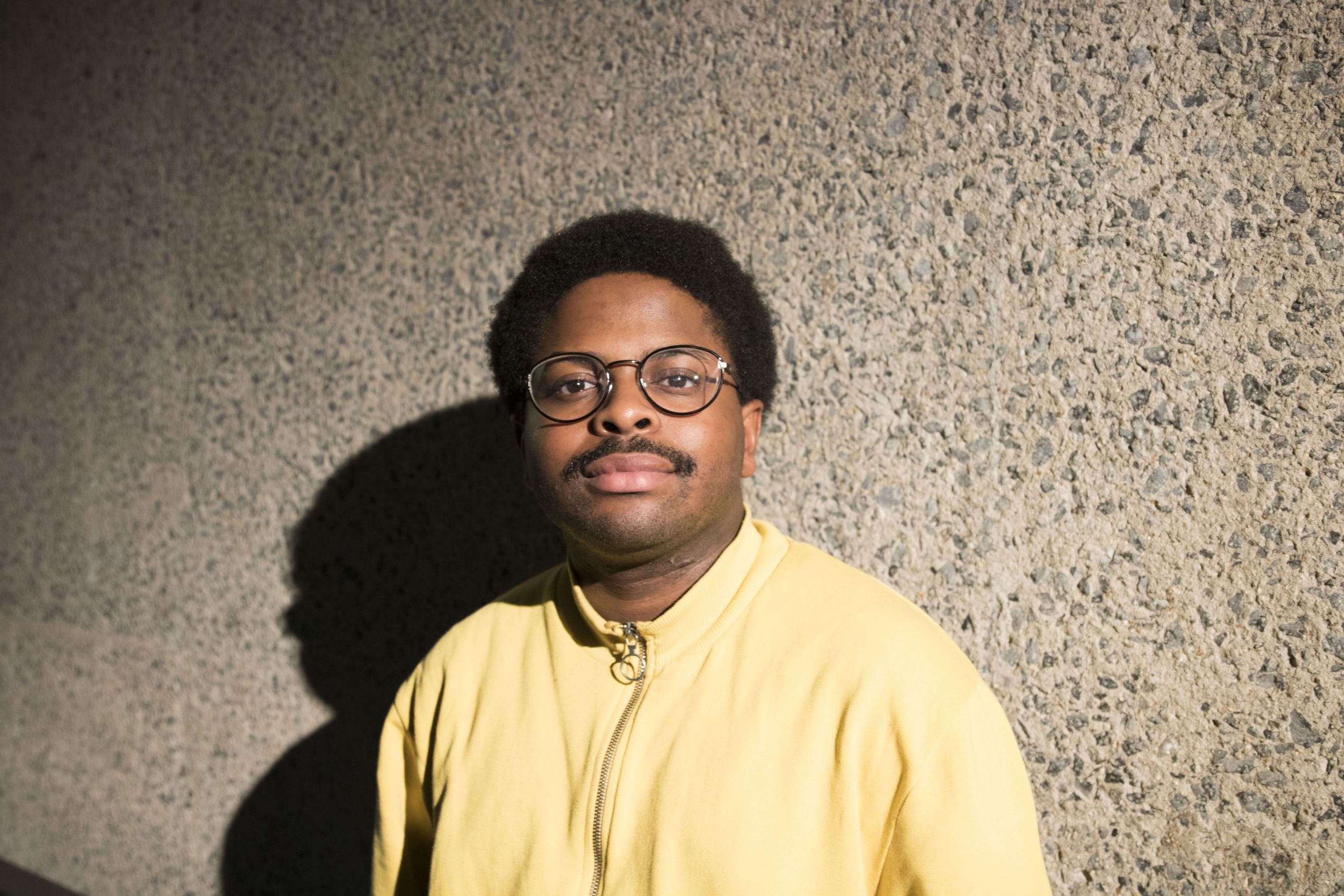
Poet Gboyega Odubanjo
Poet Gboyega Odubanjo
Gboyega Odubanjo says he went into the programme hoping to develop as a poet. ‘I definitely achieved that, but arguably more than that it’s helped me to grow as a person.
‘Barbican Young Poets is an open space where you’re invited to participate in whatever way that’s comfortable for you. It’s very rare to be given the space and time to simply focus on your poetry and that’s what the programme affords you.’
This programme is run by Barbican Guildhall Creative Learning, which is funded through the generosity of people like you. If you can, please consider donating to help this vital work continue.
Against all odds
Climber Beck Weathers survived the 1996 Everest disaster which killed eight others. He says the experience made a profound difference to him.
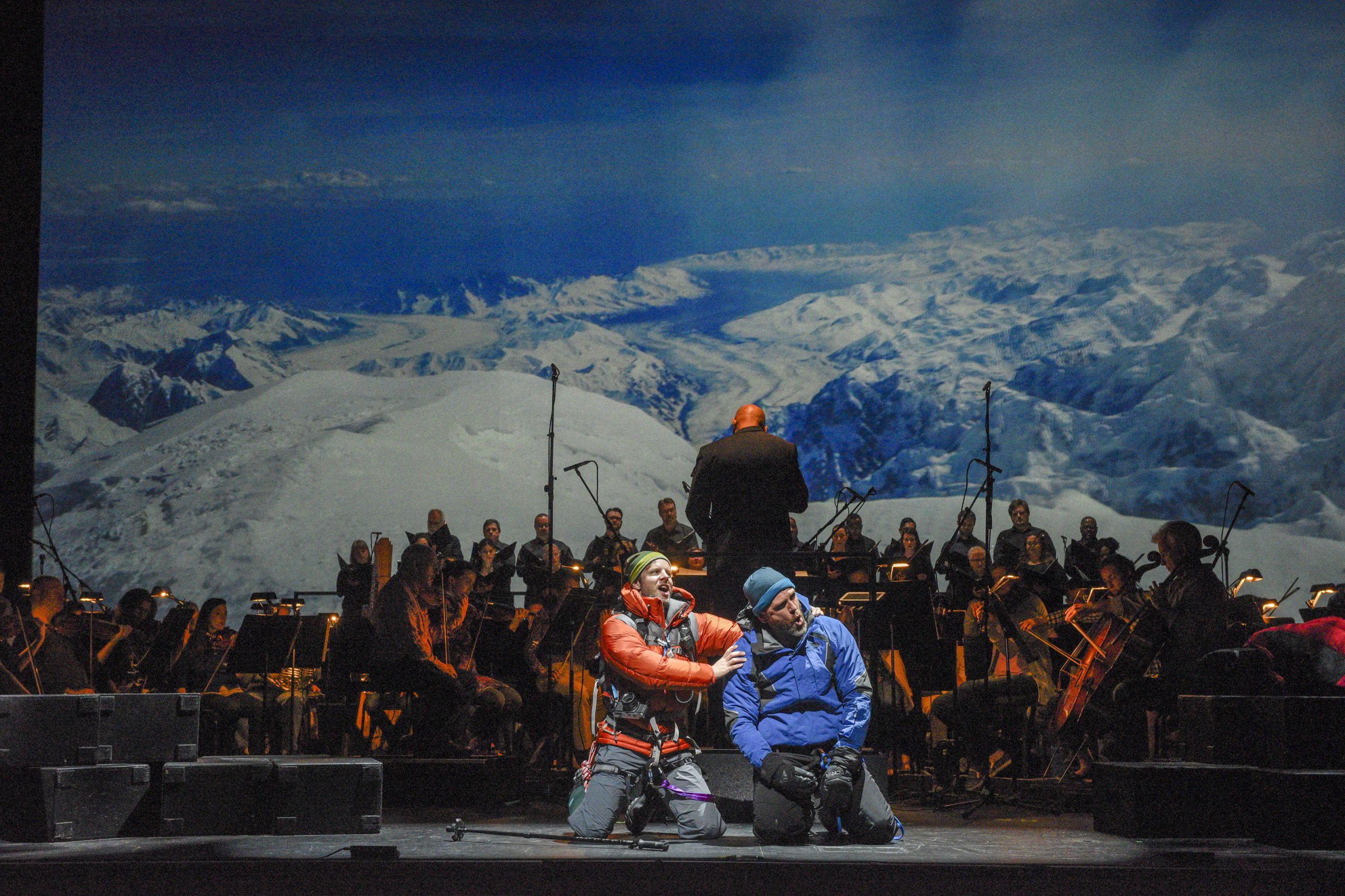
Lost and freezing cold, Beck Weathers was about to become another of Everest’s victims, another fatality in what became the worst climbing tragedy on the mountain. But, against all the odds, he woke up from a hypothermic coma, and managed to get to help.
The story of his miraculous survival – and the terrible fate of eight others – was captured in films such as Into Thin Air and Everest. But he admits the last thing he expected was that it would be made into an opera.
However, librettist Gene Scheer had long wanted to make the story for stage, composer Joby Talbot told us as he prepared for the opera’s premiere in London. ‘When he told me of his idea, I thought “this deals with the kind of subject matter that opera would be good at dealing with” because it’s big emotions – the biggest possible. It’s heroism, grief, hubris, depression, elation, love and death. I was sold immediately.’
So Scheer emailed Weathers. ‘I was intrigued,’ admits the Texan pathologist. ‘So I met him at my home and we talked for hours about what happened – because in order to come up with the story, he had to understand the people, the characters as well as the events that took place. We went through the climb, but it was also important for him to understand the people because ultimately that’s what makes it interesting – the individuals.’
The opera was written by Scheer and Talbot, a household name in TV and screen music with scores for The League of Gentlemen, The Hitchhikers Guide to the Galaxy, Sing, among many other notable works under his belt. It premiered in Dallas in 2015 and was due to have its European debut here in June, before the coronavirus pandemic.
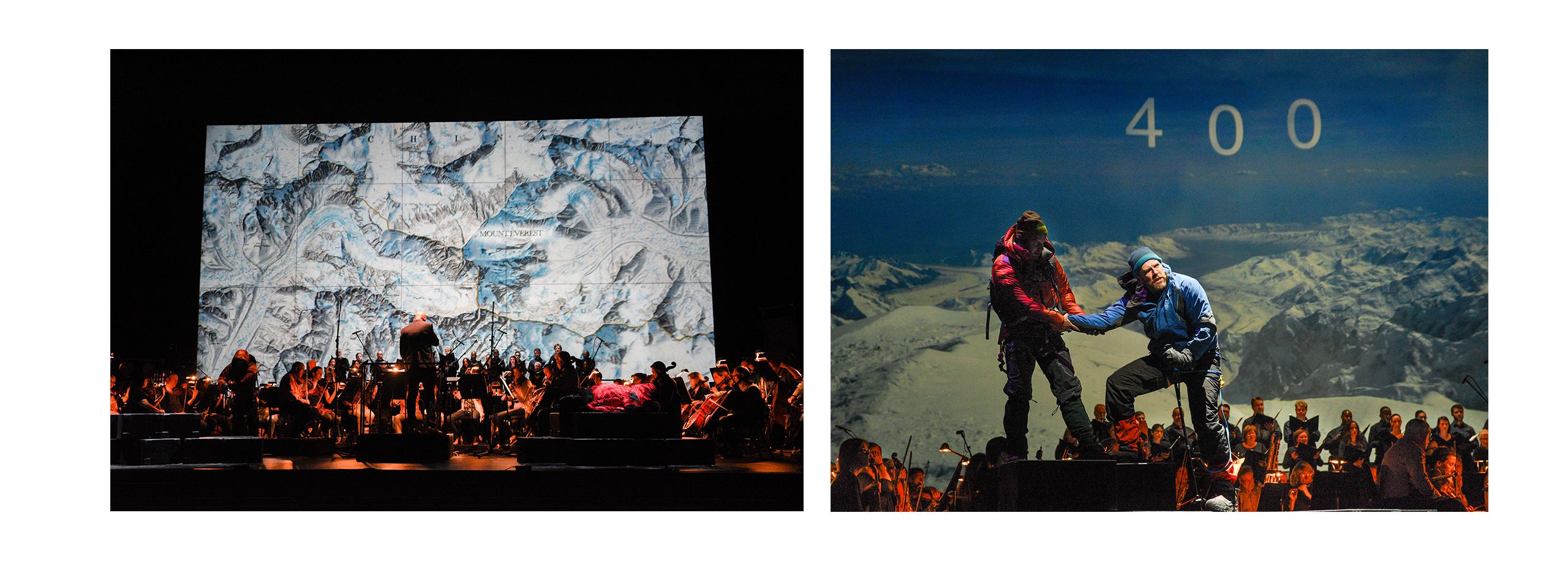
Scenes from Everest. Photo: Karen Almond
Scenes from Everest. Photo: Karen Almond
Weathers says he previously considered himself to be a ‘stone cold guy’ – someone who wasn’t easily moved by events. But, ‘as I’ve gotten older I’ve become more in touch with being an emotional person. I’m much more appreciative of what life has to offer’.
‘When the disaster occurred, I had zero idea anybody would know or care – people get injured all the time on mountains so I didn’t think it was particularly newsworthy. But for a variety of reasons this was unique. This was the first time such an incident was being followed in real time because of the internet.
‘Gene came back to my place after writing it and brought with him a little recording of an early version of the opera. I wasn’t quite ready for how personal the story was and it really hit me. I was moved to tears.’
Watch
See highlights from Everest when it was performed at Dallas Opera
Sound on stage
Music is an integral part of theatre, but how to choose the right tracks?
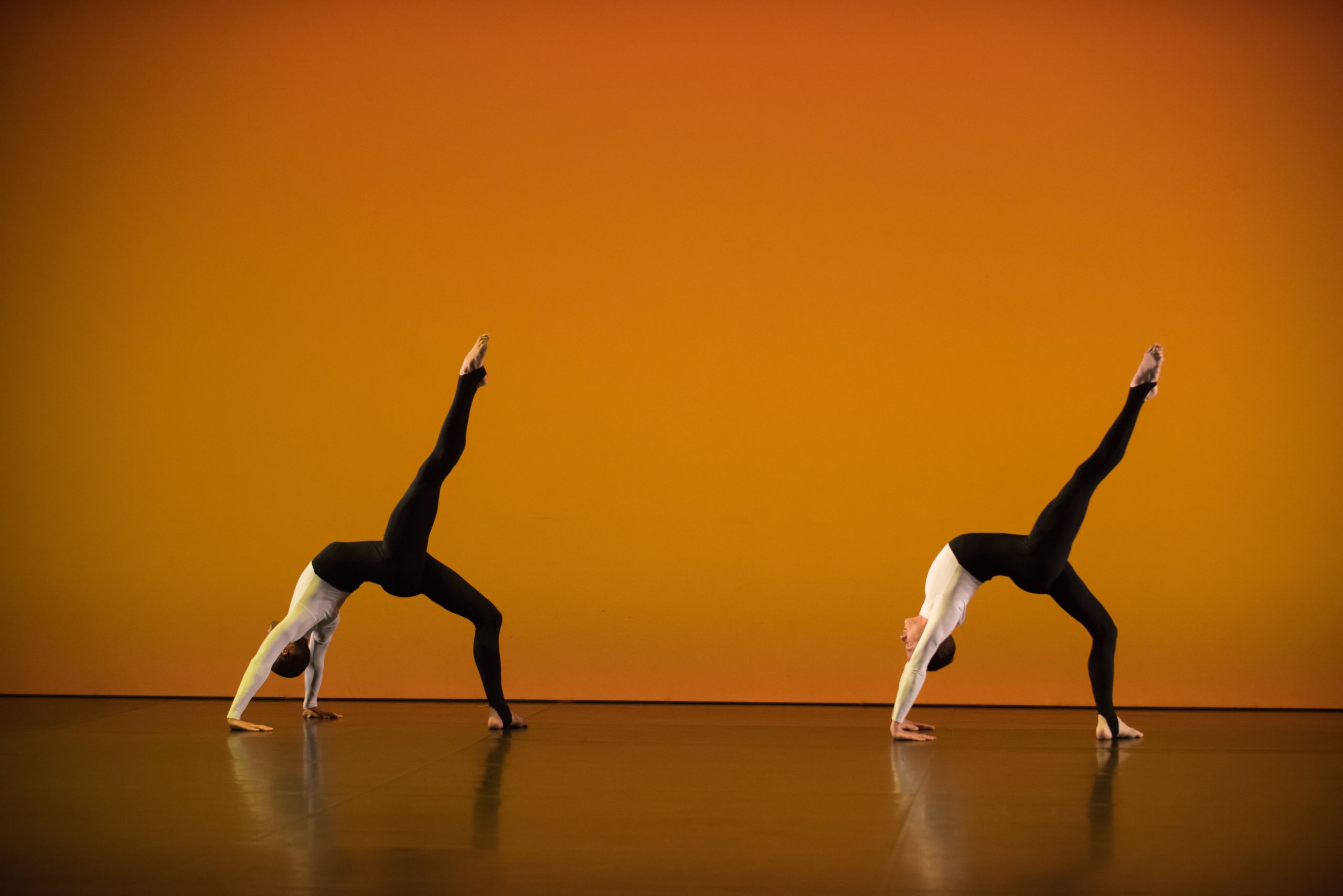
How do companies go about selecting the music for their productions? It’s vital to get it right, to capture the mood and enrich the experience. We spoke to companies that have, or were due to perform on, our stages about how they get it right. And you can listen to their selections in the playlists.
Breach: It’s True, It’s True, It’s True
It’s True, It’s True, It’s True is a dramatisation of a 1612 rape trial brought by painter Artemisia Gentileschi. Based on historic court transcripts, it was due to be performed here in April but had to be cancelled due to the lockdown. It asks us how much has really changed in the last 400 years.
‘Whenever we’re making a show, we have an open Spotify playlist that anyone on the team can contribute to,’ says Breach’s Billy Barrett. ‘It’s for songs that fit the show, character references, or for specific moments. For It’s True, I chose most of the tracks, but it’s usually a collaborative effort.’
Barrett takes us through some of the songs he chose for the company’s award-winning production took which was due to take place in The Pit in April, but had to be postponed due to lockdown.
MIA: Born Free
‘We liked the idea of making an entrance at the opening of the play. We wanted to offset the costumes with something contemporary and quite aggressive. We use it throughout the show to convey the anger felt by Artemisia, hidden below the surface.’
Mitski: Thursday Girl
‘This one was chosen because of the way it sounds. It reminded me of doing plays in churches. The play is set in the court room, but takes place within this world of religion, and there’s religious iconography throughout the play. So this was picked because of the reverberating sound.’
Yeah Yeah Yeahs: Heads Will Roll
‘We chose this track because it’s very literal. The pre-set music is very medieval, so it sets people up to expect a period drama, and then they get this – it’s a jolt.’
X-Ray Spex: Oh Bondage! Up Yours!
‘There’s a comedy chase scene in the play. During rehearsals we used the Benny Hill chase music because we were playing with that gross idea of “funny sexism” in the 70s. We were listening to our collaborative Spotify playlist, which had lots of female-led rock bands, and this track really seemed to lend itself to a comedy chase scene.’
Kiss & Cry Collective: Cold Blood
‘Our process for choosing music is collective; it’s somewhat chaotic,’ says Jaco Van Dormael, Belgian film director and one half of Kiss & Cry Collective’s creative team with the renowned dancer Michèle Anne De Mey. ‘Nobody knows why we settle on a final choice. It’s a little bit like falling in love: you don’t know why you’re in love but you are.’
The company’s Cold Blood took place here as part of London International Mime Festival in January. A beautifully whimsical production, it told seven stories of surprising deaths, highlighting the fragility of life.
‘The stories are seven stupid ways of dying, so the music we chose is in seven different styles – each track resonated with each character,’ says Van Dormael
Nina Simone: Little Girl Blue
‘This was in the story about a man who goes to a striptease club and ends up choking on the stripper’s bra clasp. It’s the perfect song for her dance.’
Lou Reed: Perfect Day
‘This story starts with a perfect day – the sun is shining, everything is going well for this person. Then they go to a car wash and forget to close the windows. The song choice was obvious. There is a certain sense of dark humour in some of the stories, but they’re all tinged by sadness because someone has died.’
Arvo Pärt: Spiegel im Spiegel
‘This music is so poetic. It allows you the space to know you can wait for what’s going to happen next. It’s the kind of music that you can go into for long periods; that seems to suspend the passing of time – the slow droplet falling, or reflections in mirrors.’
Michael Clark Company: to a simple, rock ’n’ roll . . . song .
Performed here in 2016 and 2017, this triple bill from ground-breaking choreographer Michael Clark incorporated three musical artists that are important to him: French composer Erik Satie (1866-1925), American ‘punk poet laureate’ Patti Smith, and David Bowie. Michael Clark Company marks 15 years as a Barbican Associate Artist this year.
Erik Satie: Prelude – Fête donnée par des chevaliers normands en l’honneur d’une jeune demoiselle
Clark was reflecting on his mentors and colleagues who had created to Satie’s music: Frederick Ashton (Monotones I and II) Merce Cunningham (Septet, Nocturnes) John Cage, Yvonne Rainer (Satie Spoons). He realised the French composer’s music had been the inspiration for some of their most inventive and strikingly original yet emotionally moving works.
Patti Smith: Land: Horses/Land of a Thousand Dances/La Mer (de)
The inclusion of this song, like the David Bowie track were described by Clark as ‘rewards for sitting through the Satie’. Acutely aware that his works appeal to people who aren’t dance experts (Pulp singer Jarvis Cocker credits him with introducing him to the art form), accessibility is important to the Scots-born choreographer. He also told the Sydney Morning Herald it's also a reward for the dancers, because the Satie is ‘difficult for them, it's very pared down. So it's a reward for them to do something more abandoned.’
David Bowie: Blackstar
Clark says David Bowie had a huge influence on him. ‘I was so shocked by his death, really shocked,’ he told the Observer New Review. ‘I kept thinking of that moment when he put his arm around Mick Ronson [Bowie’s guitarist] on Top of the Pops all those years ago in the 70s and how it triggered this huge sense of relief in me as a boy. It was the only physical contact I had seen men do apart from punching each other. It seems ridiculous now that a small gesture like that could be so meaningful, but, for me, it was. It planted in me the idea that there was another way.’
30 years of Discovery
Andra East of LSO Discovery looks back over 30 years of the learning and community programme.
Before the coronavirus pandemic, LSO Discovery ran an average of three events a day and reached over 60,000 participants each year – an indicator of just how influential a force it’s become in music since it was founded in 1990. The programme is an integral part of what the London Symphony Orchestra does – from family concerts to creative music activities in healthcare and school settings, community choirs to supporting emerging composers.
‘The activities we do are integrated with the work of the Orchestra,’ says Head of LSO Discovery, Andra East, speaking before the Barbican closed for lockdown. ‘What that means is that we can guarantee a level of excellence in the work, because of the musicians performing at the highest level, creating human connections with our communities.’
Among the schemes under the Discovery umbrella is LSO Create, which gives adults with learning disabilities the opportunity to make music with the Orchestra’s musicians. LSO On Track is aimed at young people in east London, while LSO Sing offers people of all singing abilities the chance to take part in choirs.
There are also programmes offering instrumentalists, composers and conductors a wide variety of opportunities to learn from professional musicians. 'The Masters in Orchestral Artistry is run in partnership with Guildhall School of Music & Drama, and the long-running LSO Panufnik Composers Scheme sees six emerging composers have their music workshopped by the Orchestra,’ says East, adding the composers very often then go on to wider recognition.
Even during lockdown, LSO Discovery has been able to continue to deliver some of its activities online, including remote sessions for members of LSO Create, music sessions for families with under 5s, and singing videos for the LSO’s singing community. More music resources for schools and families engaging in home learning are being made available too.
To find out more about LSO Discovery see lso.co.uk/lso-discovery

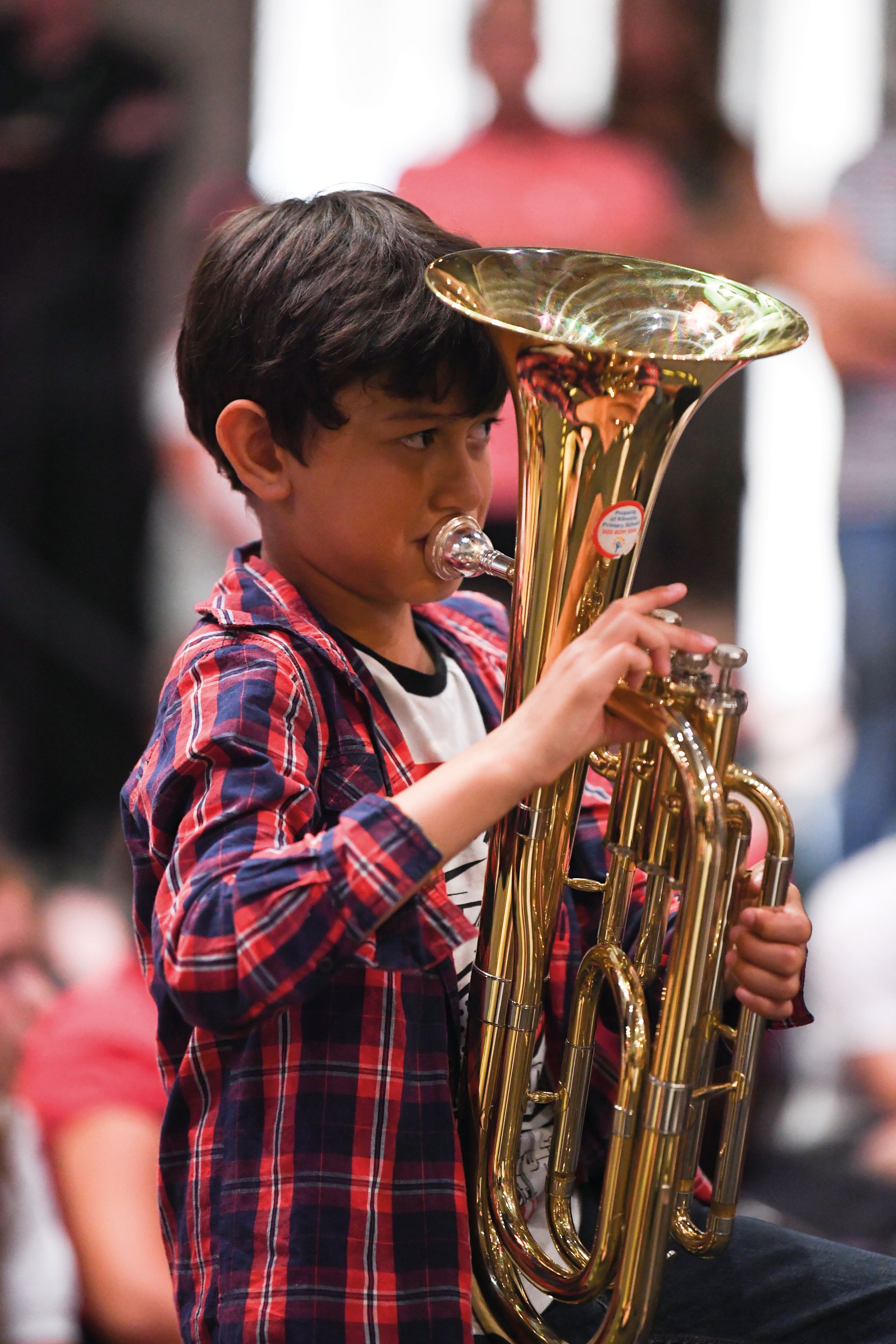
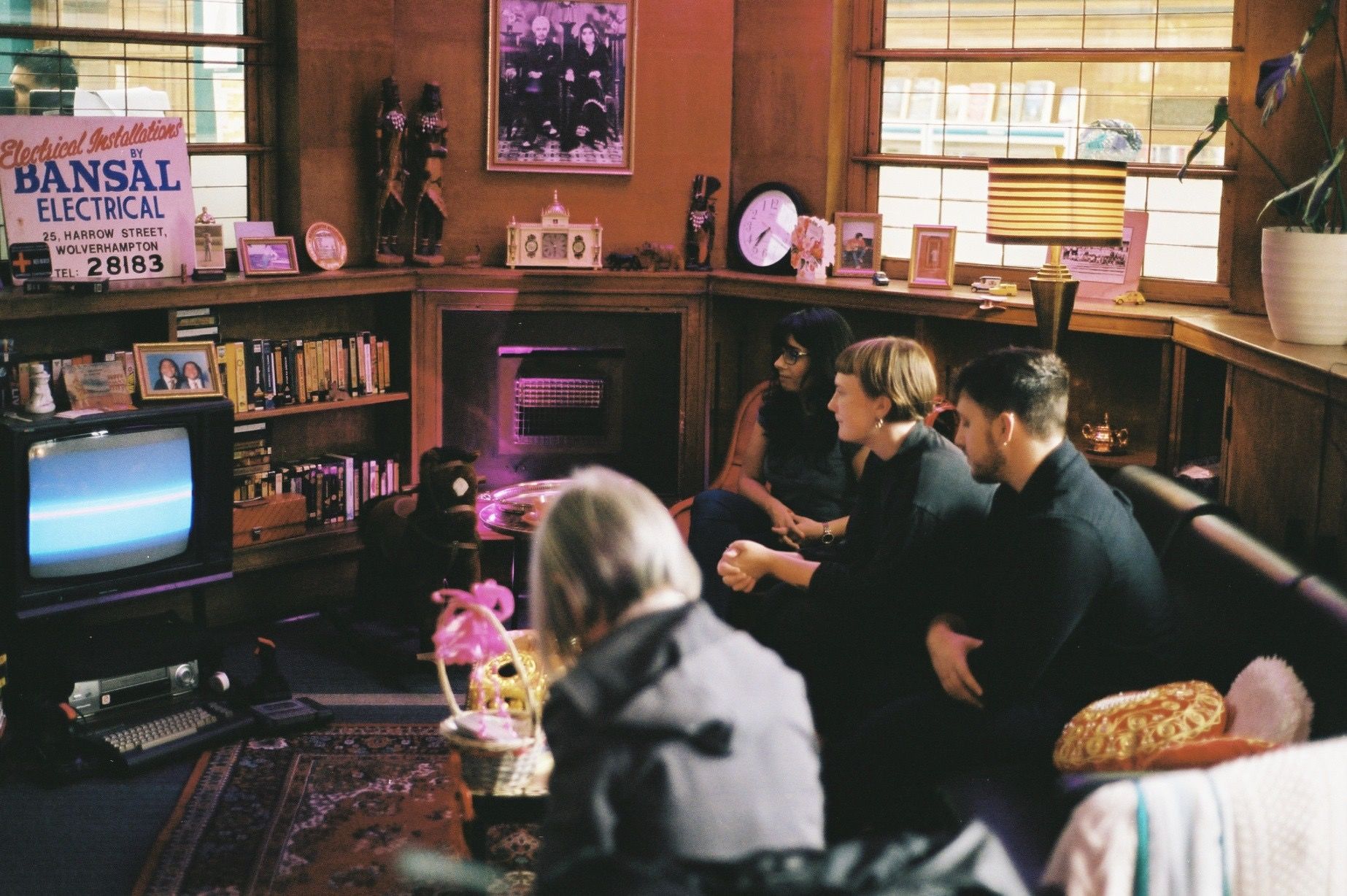
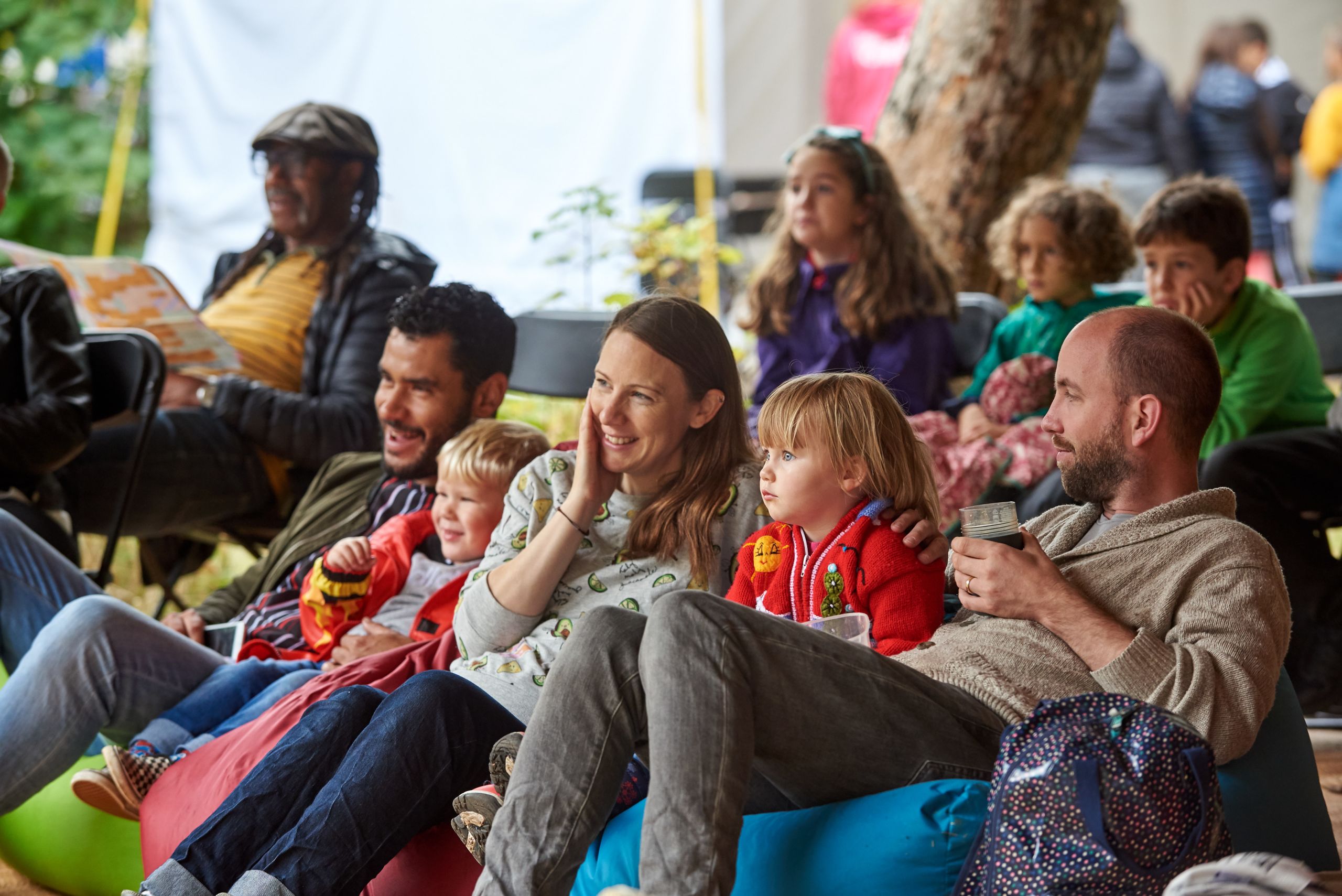
A film festival in your home
Get into the spirit of Leytonstone Loves Film (with appropriate social distancing) as the partners behind the festival run watch parties every fortnight in the coming months.
Last year’s debut Leytonstone Loves Film saw over 8,000 people take part in a broad range of workshops, activities and film screenings. Created as part of the London Borough of Culture 2019, it was put together by people from across Leytonstone - including local arts venues, filmmakers and film enthusiasts.
Even though we currently can’t visit a cinema together, we are still celebrating the way movies and sharing stories can make us feel connected.
The Leytonstone Loves Film watch parties mean you can join others to see a film or series of shorts simultaneously online, followed by a conversation about it on social media or video conferencing.
The programme is being put together by the people behind the festival, which is supported by the Barbican and London Borough of Waltham Forest. Each organisation has picked films that mean something to them, including a range of shorts selected by Anthony Hett and Sarah Flanagan of Forest Film Club plus E17 Films’ range of previous Walthamstow International Film Festival prize-winning shorts, and a film by Leytonstone’s most famous son, director Alfred Hitchcock.
Father’s Day gift - solved
Show your Dad you love him this Father’s Day by giving a Barbican Membership. He’ll get priority booking, 20% off cinema tickets and other exclusive discounts such as at our restaurants and bars (as soon as they reopen). There’s also a programme of events which are for Members only.

My Barbican: Erland Cooper
The multi-instrumentalist and composer tells us about his favourite places around the Centre.
Breton doorways
'Behind Ben Jonson House runs the perfect right angle of Breton House. When the sun lands across it, it creates another sharp line and highlights the symmetry so well. It shows off the rough textured, hand drilled, concrete pillars and my favourite colour, Lee Krasner blue, on the single story steps up to the building door entrances, which I find all rather welcoming.'
Guildhall reeds, coots, herons, mallards and moorhens
'If I perch from above on a walkway and spot a classical musician from the Guildhall School walking with an instrument on their back, I can’t help but think of the Barbican’s peregrine falcons, how powerful they are with a refined skillset and talent, designed for one thing. It’s more exciting and electric than seeing a guitarist. I enjoy spotting the moorhens, coots, mallards and herons among the reeds, finding a wild space within a busy city. Growing up in Orkney, I never had the chance to study music so I am often envious of those students but it now inspires me and I carry on fishing like a heron.'
Walkway silhouettes
'When the sun lights through the walkways between buildings it reflects off different surfaces and textures, highlighting well designed lines and angles once again but it also creates silhouettes of those taking a moment of calm, not always easy to do in a city. The stone benches are the perfect places to read or listen to audio mixes from my studio.'
Mirrored, floating signage in the lift
'
Herbert Spencer’s modernist signage is all over the estate, he made a new alphabet, symbols and layout for the Barbican and building names. I’m fond of the symbol in the lift. It distracts me from the cold lighting and floats double on the mirror. The lifts were designed to wait no longer than 100 seconds and this blurred rook reminds me to play more chess, to think more chess - so much can be achieved in under two minutes.'
New perspectives
Sometimes as you wander around the Barbican, there’ll be a little detail that catches the eye and puts a smile on your face. This lovely shot of a coot as it swims on the Lake was taken by @elegantandugly. ‘There is a meditative aspect to wandering the Barbican walkways, which I love,’ they say. ‘You can admire the light and shadows on the concrete, and notice details from above.’
Getting local on the radio
Tune in to a very special radio programme, starring people and places around Culture Mile, the cultural space around the Barbican and Museum of London.
For two weeks, live art collaborators Hunt & Darton will be broadcasting hour-long daily shows featuring people from across the area.
Shows will be created using phones, via Zoom workshops and online networks about the weird and wonderful places people live in and how they’re living right now.
The line-up includes interviews with residents and businesses within Culture Mile, commissions from Scottee, Victoria Melody and guest presenters Bourgeoise and Maurice. From survival tactics and boredom busters for isolation, to take-away food reviews from key workers and live reports from the over 70s in their homes, presenters Hunt & Darton will help you get to know the community here.
Find out more, including how you can be involved on the Culture Mile website.
Support the Barbican
We rely on ticket sales and your enduring support and generosity to be able to present and share our programme with you and thousands of others. We’re all finding ourselves in completely new territory, which presents a real financial challenge for us and for those we work with. So, if you’re able, please consider donating to us so we can keep investing in the artists and organisations that help make this place what it is. Please also consider donating to our artistic residents and associates to support them through these difficult times.
What's On
We're looking forward to the day when we can open our doors and welcome you all back to the Barbican. We are currently closed until 30 June 2020 but you can see what's coming up later in the year on our website.

With thanks
The City of London Corporation, founder and principal funder
Centre Partner
Christie Digital
Major Supporters
Arts Council England; Esmeé Fairbairn Foundation; Sir Siegmund Warburg’s Voluntary Settlement; The National Lottery Heritage Fund; Terra Foundation for American Art; UBS; Wellcome
Corporate Supporters
Aberdeen Standard Investments; Allford Hall Monaghan Morris; Audible; Bank of America; Bloomberg; Calvin Klein; CMS; DLA Piper; Howden M&A Limited; Leigh Day; Linklaters LLP; National Australia Bank; Natrium Capital Limited; Newgate Communications; Pinsent Masons; Reed Smith; Slaughter and May; Taittinger Champagne; UBS
Trusts & Grantmakers
29th May 1961 Charitable Trust; Jonathan Ruffer Curatorial Research Grant from the Art Fund; Embassy of the Kingdom of the Netherlands
We also want to thank Barbican Patrons, donors to Name a Seat and everyone who has supported the Barbican by making a donation.
To find out more, visit barbican.org.uk/supportus or email [email protected]
The Barbican Centre Trust, registered charity no. 294282